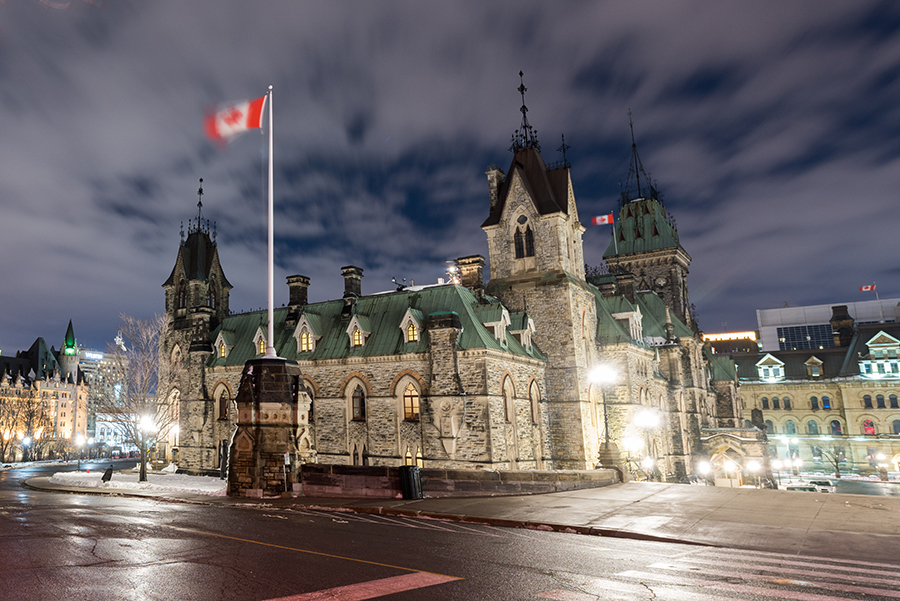Calgary parents face capacity issues at schools as student enrolment reaches record levels
Paula Tran,
Local Journalism Initiative Reporter
With the new school year starting in two weeks, the Calgary Board of Education is looking for ways to deal with record levels of student population growth throughout the next 10 years.
Justin Simaluk and his wife have lived in Calgary’s inner city for five years, but the recent birth of their child means they are already worried about where their child will go to school.
Simaluk said he got a letter from the Calgary Board of Education (CBE) last year that warned them that their neighbourhood school is now full and new Kindergarten to Grade 6 kids will be overflowed.
In an online update posted in September 2023, Connaught School administration said overflowed students will now have to attend Wildwood School because Ramsay School and Earl Grey School have reached their capacity and can’t accommodate additional overflow students.
For Simaluk’s family, that means a 20-minute drive or a bus ride that will take more than 30 minutes.
“I would like [my child] to be grounded in the same neighbourhood. I don’t want them to have to go to one elementary in one neighbourhood and a junior high in another … I don’t think we should be forced to move just so they can go to school when we’re in an established area,” he said.
“We shouldn’t have to uproot our family and we shouldn’t have to change neighbourhoods or move to the suburbs just to do a basic thing like going to school.”
How many students are currently enrolled in Calgary public schools?
Simaluk’s family is not the only one dealing with school capacity issues. Connaught School is one of 34 schools that are at capacity, according to the CBE. Fifty schools are currently receiving overflow students from these communities.
This comes after the CBE witnessed record student enrolment over the past four years. According to the 2024-2025 budget report, there was a five per cent increase in student enrollment over the past four years.
As of September 2023, around 138,244 students were enrolled across 251 schools in the CBE. This year, the CBE saw an additional 7,000 students in the system.
This prompted the CBE to publish its Ten Year Student Accommodation and Facilities Plan in June, which outlines potential solutions to address the record levels of student enrollment.
“This has completely broken the mold. These record enrolment levels have required some rapid movement than we ever imagined would be required, and that’s why parents are feeling that it’s a little bit more rushed,” Dany Breton, superintendent of facilities and environmental services for the CBE, told LWC.
“But it’s really a reflection of the changes to the federal immigration targets that have also been at record high levels, and of course the Alberta Is Calling program that has also attracted Canadians from across the country to this great province and this great city.”
Utilization rates across CBE system high: superintendent
The high enrollment numbers also mean utilization rates are high. Utilization rates indicate how close a school is to its maximum student capacity.
Breton said the utilization rate system-wide is 93 per cent compared with the ideal utilization rate of 85 per cent.
Around 150 schools are over the ideal utilization rate, and that number is expected to grow with increasing enrollment.
“When the school utilization rate gets to that point where it’s not conducive to being able to properly support students within a learning environment because it’s getting too full, then we start looking at what the options are to overflow new students that would be entering that school to a receiving school as close as possible to their communities,” Breton said.
“Now, unfortunately, that’s not always not always possible … There will be other students that, as they continue to arrive within that overflowed school boundary, that they might have to travel to a second [school].
“In two cases, we have schools that have three overflow receiving schools, so students are having to go to a third school.”
Breton emphasized that students already enrolled in their neighbourhood schools will be able to continue their education there without any disruptions.
“For the student that’s being overflowed, they will be going into that school for the first time because they wouldn’t have been already accepted within the other school. They’re developing those friendships and those connections with teachers within that new school environment. They’re making connections with a new community and helping build bridges between communities within the city, and they’re able to progress through those entire years if they want,” he said.
What are the impacts if the utilization rate climbs?
The Ten Year Student Accommodation and Facilities Plan said the increased enrolment will have financial impacts on schools and the CBE. This includes transportation costs, operational costs, maintenance funding and programming.
The 2024-2025 budget report said as more students enter the school system and more teachers are hired to teach those additional students, costs are expected to grow to support students in the classroom.
The report also said the funding received on a per-student basis has remained relatively flat since the 2018-2019 academic year, and the rising costs mean the CBE is “stretching each dollar further.”
More money will also be needed to upgrade and maintain existing facilities. According to the Ten Year Student Accommodation and Facilities Plan, the cost to maintain existing CBE facilities is around $68 million to $136 million annually. This is also expected to increase due to inflation.
If current trends persist, the CBE said in many cases schools will be over 100 per cent utilized and growing classroom sizes may lead to educational programming challenges. The Ten Year Student Accommodation and Facilities Plan says there will be a decrease in available space to meet the needs of students with additional needs, and increased overflows will lead to thousands of students unable to attend their local school.
Some schools will have to set up unconventional learning spaces – learning commons, staff rooms, etc. – to address challenges with classroom availability.
Longer bus rides will also cause additional strain on the CBE’s transportation system, which is impacted by a driver and bus shortage, the report adds.
“We certainly agree with that when a school gets very full, then you start limiting the opportunities and the options that the school administrator and teachers have within the building because there’s less and less space,” Breton said.
What are the proposed long-term solutions?
Breton said the CBE, the City of Calgary and the Alberta government will have to work together to find solutions to accommodate the growing student population.
For example, the city can involve the CBE in discussions around approving and developing new communities so the district can start planning. The superintendent said the city has policies to approve and monitor the development of new communities that can have an impact on school jurisdictions.
“In times when enrollment is so strong in a new and developing community, having site readiness as soon as possible becomes really important,” Breton said.
“That close coordination with the city is really important, and it is facilitated and enabled by something called the Joint Use Coordination Committee.”
Breton added the city can also involve the CBE in discussions about densifying existing neighbourhoods early, pointing to the RC-G rezoning bylaw that was approved earlier this year.
“Knowing that these changes are happening within this time frame, we can anticipate that we might be receiving the number of students that will make this school utilized again,” he said.
On the provincial side, Breton hopes the Alberta government will approve new modulars for existing schools or the construction of new schools.
“The government of Alberta has the funding and the authority to announce and construct new schools on our behalf. For us, the greater predictability and long-term visibility that we can have from the government on what they will be approving on an ongoing basis, the better. It allows us to then plan ahead of time if we know that there are going to be new school approvals or modular classroom approvals to a certain degree every year,” Breton said.
Simaluk is hoping the city, the CBE and the province will also acknowledge that many couples want to raise their families in inner-city neighbourhoods. He said the CBE needs to be more communicative with families living in neighbourhoods with overflow schools, and the city needs to have a proper census to know where families are living.
“I don’t think a lot of people look at the Beltline as a residential neighbourhood, even though it’s one of the most populated and dense residential neighborhoods in the city,” he said.
“If the city wants people to adopt higher density living and living more sustainably, then we have to go beyond services like a bar or restaurant. We need to start providing base-level services like schools and childcare and the bare minimum that we need to live in Canada.
“If you want families to be moving and living like this, you need to support families.”
Paula Tran,
Local Journalism Initiative Reporter
LiveWire Calgary






